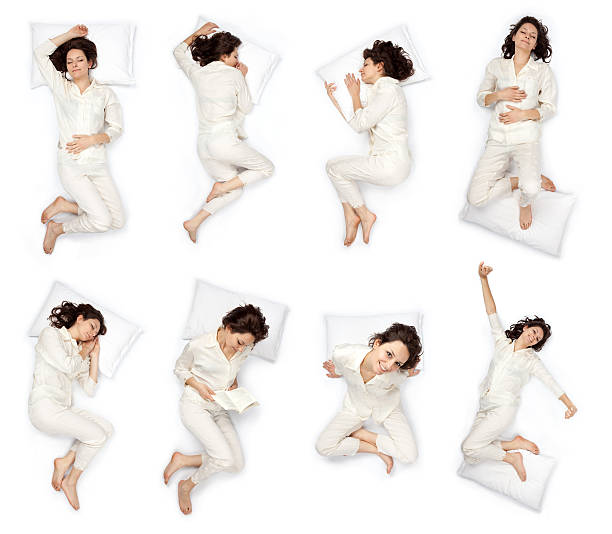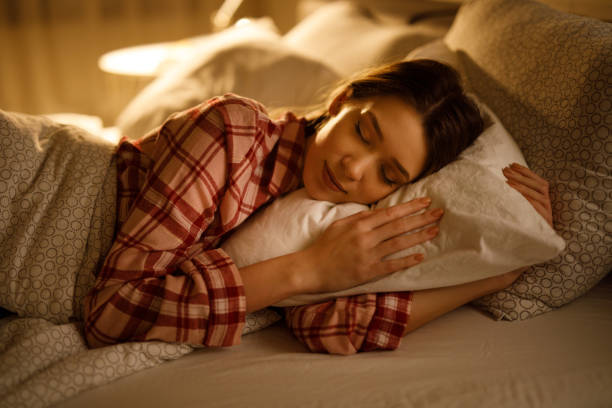I. Introduction
Sleep is more than just a period of rest; it’s a fundamental component of overall health and well-being. The way we sleep, particularly our sleeping position, impacts our sleep quality and physical health. This guide explores rest science and provides practical insights for the best part.
II. The Science of Sleep
Understanding the intricate dance of sleep stages is vital. When you sleep, your body cycles through different phases, including REM (Rapid Eye Movement) and non-REM stages. During REM, your brain is active, leading to vivid dreams, while non-REM sleep involves deep restorative processes. Quality sleep is essential for memory consolidation, emotional regulation, and overall cognitive function. Studies consistently link inadequate sleep to various health issues, including obesity, diabetes, and heart problems.

III. Common Sleeping Positions
A. Back Sleeping
Sleeping on your back, known as the supine position, helps maintain spinal alignment. Use a medium-firm mattress and thin pillow to reduce back and neck pain.
B. Side Sleeping
Side sleeping, especially in the fetal position, is a popular choice. It can alleviate snoring and sleep apnea symptoms, enhancing your breathing during sleep. For optimal support, choose a medium-firm mattress and a contoured pillow that cradles your head and neck, reducing strain.
C. Stomach Sleeping
Stomach sleeping, although common, can strain your neck and spine. It’s advisable to use a soft pillow or no pillow at all to prevent excessive strain on your neck. However, transitioning to side or back sleeping is encouraged to promote spinal alignment and reduce discomfort.
D. Combination Sleeping
Combination sleepers enjoy the flexibility of changing positions throughout the night. While this adaptability can enhance overall comfort, it’s crucial to have a responsive mattress and a versatile pillow that supports various sleeping angles.

IV. Sleep Disorders and Sleeping Positions
A. Sleep Disorders and Their Impact
Sleep disorders can disrupt sleep. Side sleeping can help. See a healthcare professional.
B. Expert Recommendations
Experts recommend positional therapy, a technique involving adjusting sleeping positions to manage sleep disorders. For instance, individuals with sleep apnea are often advised to avoid back sleeping, which can obstruct airways. Side or slightly elevated sleeping positions are favored, often in combination with CPAP (Continuous Positive Airway Pressure) devices.
V. Choosing the Right Pillow and Mattress
A. Selecting the Ideal Pillow
Selecting the appropriate pillow for a comfortable sleep relies on the way you position yourself while sleeping. For back sleepers, a thin, supportive pillow is ideal, while side sleepers benefit from firmer, contoured pads that maintain spinal alignment. Stomach sleepers may consider a soft, nearly flat pillow to minimize strain.
B. Finding the Perfect Mattress
When selecting a mattress, consider your body weight and preferred sleeping position. Back sleepers often benefit from medium-firm beds, providing both support and comfort. Side sleepers find memory foam mattresses accommodating, contouring to their body shape. To prevent excessive sinking and maintain proper alignment, individuals who sleep on their stomachs require a firmer mattress—spinal alignment.

VI. Tips for Improving Sleep Quality
A. Lifestyle Changes for Better Sleep
In order to improve the quality of our sleep, it is essential to adopt certain habits. Regular exercise, a balanced diet, and effective stress management are three important habits that can significantly enhance sleep quality. Exercise helps to promote physical tiredness, making it easier to fall asleep. A balanced diet ensures that we get the proper nutrition that our body needs. Lastly, stress management techniques such as yoga and meditation can help to calm the mind, preparing it for a restful sleep.
B. Creating a Relaxing Sleep Environment
Your sleep environment plays a vital role. Keep your bedroom dark, quiet, and calm. Consider using blackout curtains, earplugs, or white noise machines to block disturbances. Additionally, invest in a comfortable mattress and pillows, ensuring your sleep space is conducive to rest.
VII. Conclusion
In this guide, we’ve explored the intricate world of sleeping positions and their impact on sleep quality and overall health. Armed with knowledge about different sleeping positions, their benefits, and the right sleep accessories, you are now empowered to make informed choices about your sleep.

VIII. Sleeping Positions (FAQ)
Q1: Can my sleeping position affect my dreams?
A1: Yes, sleeping positions can influence your dreams. For instance, sleeping on your back might lead to more vivid and memorable dreams, while stomach sleeping could result in more intense fantasies due to pressure on the chest.
Q2: How can I prevent waking up with a stiff neck when I sleep on my stomach?
A2: To prevent neck stiffness while sleeping on your stomach, opt for a thin pillow or no pillow at all. Additionally, consider placing a small pillow under your hips to reduce strain on your lower back.
Q3: Is it normal to change sleeping positions frequently during the night?
A3: Yes, it’s normal to change sleeping positions multiple times during the night. Most people change jobs as a natural part of the sleep cycle. However, if you find yourself waking up frequently due to discomfort, it might be worth evaluating your mattress and pillow for better support.
Q4: Can changing my sleeping position improve my snoring?
A4: Yes, changing your sleeping position can sometimes reduce or alleviate snoring. Side sleeping is often recommended for snorers, as it keeps the airways open, reducing the vibrations in the throat that cause snoring.
Q5: How long does it take to adjust to a new sleeping position?
A5: Adjusting to a new sleeping position varies from person to person. It might take a few nights to a couple of weeks to feel completely comfortable. Using supportive pillows and a suitable mattress can expedite the adjustment process.
Q6: I often wake up with numbness in my arm when I sleep on my side. What can I do to prevent this?
A6: Numbness in the arm while sleeping on your side can be due to nerve pressure. Use a supportive pillow for your head and neck, and place a soft pillow under your upper arm to relieve pressure and improve blood flow.
Q7: Is there a specific sleeping position recommended during pregnancy for better comfort and safety?
A7: Yes, sleeping on your left side is generally recommended during pregnancy. This position promotes better blood circulation to the fetus and kidneys and reduces the pressure on the liver. Placing a pillow between your knees and another one under your abdomen can further enhance comfort and spinal alignment.
Q8: I suffer from acid reflux. Can my sleeping position worsen my symptoms, and are there positions that can help alleviate acid reflux?
A8: Certain sleeping positions worsen acid reflux. Sleep on your left side to minimize risk. Use a wedge pillow to elevate the upper half of your body for better results.
Other websites and articles
Here are two articles that discuss sleeping positions:
- “What Are the Best Positions for Sleeping?” by the Sleep Foundation can help you find the best sleeping position for your needs, especially if you’re waking up in pain. You can read the full article at the Sleep Foundation.
- “Choosing the Best Sleep Position” is an article from Johns Hopkins Medicine. It discusses how sleep position can affect one’s health, especially as one ages or has medical issues. The full report is available at Johns Hopkins Medicine.
Read also “Smile Bright: A Comprehensive Guide to Healthy Teeth and Lasting Oral Wellness”

